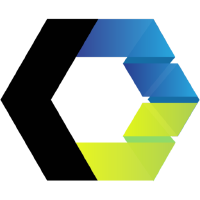 +
+  +
+ 
<needle-engine> web component
Needle Engine provides an easy-to-use web component that can be used to display rich, interactive 3D scenes directly in HTML with just a few lines of code.
Quick Start
<!-- Import the component -->
<script type="module" src="https://cdn.jsdelivr.net/npm/@needle-tools/engine/dist/needle-engine.min.js"></script>
<!-- Use it like any other HTML element -->
<needle-engine src="https://cloud.needle.tools/-/assets/Z23hmXBZ21QnG-Z21QnG-world/file" background-color="transparent"></needle-engine>Open this example on Stackblitz
Scripting support
Once you outgrow the configuration options of the web component, you can extend it with custom scripts and components, and full programmatic scene graph access.
Use the integrations!
For complex 3D scenes and visual editing, we recommend using Needle Engine with one of our Editor integrations. They provide a powerful creation workflow and an state-of-the-art build pipeline with 3D optimizations.
Install from CDN
While our default template uses vite, Needle Engine can also be used directly with vanilla Javascript – without using any bundler.
You can add a complete, prebundled version of Needle Engine to your website with just a line of code. This includes our core components, physics, particles, networking, XR, and more. Use this if you're not sure!
<script type="module" src="https://cdn.jsdelivr.net/npm/@needle-tools/engine/dist/needle-engine.min.js">
</script>Install from NPM
You can work directly with Needle Engine without using any Integration. Needle Engine uses three.js as scene graph and rendering library, so all functionality from three.js is available in Needle as well.
You can install Needle Engine from NPM by running:npm i @needle-tools/engine
Many examples can be found on StackBlitz.
Local Development with VS Code
If you want to work with Needle Engine without any integration, then you'll likely want to run a local server for your website. Here's how you can do that with Visual Studio Code:
- Open the folder with your HTML file in Visual Studio Code.
- Install the LiveServer extension.
- Start live-server (there's a button "Go Live" in the footer of VSCode)
- Open
http://localhost:5500in your web browser, if it doesn't open automatically.
three.js and Needle Engine
Since Needle Engine uses three.js as scene graph and rendering library, all functionality from three.js is available in Needle as well and can be used from component scripts. We're using a fork of three.js that includes additional features and improvements, especially in relation to WebXR, Animation, and USDZ export.
Tips
Make sure to update the <needle-engine src="myScene.glb"> path to an existing glb file or download this sample glb and put it in the same folder as the index.html, name it myScene.glb or update the src path.
<!DOCTYPE html>
<html lang="en">
<head>
<meta charset="UTF-8" />
<link rel="icon" href="favicon.ico">
<meta name="viewport" content="width=device-width, user-scalable=no">
<title>Made with Needle</title>
<!-- importmap -->
<script type="importmap">
{
"imports": {
"three": "https://cdn.jsdelivr.net/npm/three/build/three.module.js",
"three/": "https://cdn.jsdelivr.net/npm/three",
}
}
</script>
<!-- the .light version does not include dependencies like Rapier.js (so no physics) to reduce the bundle size, if your project needs physics then just change it to needle-engine.min.js -->
<script type="module" src="https://cdn.jsdelivr.net/npm/@needle-tools/engine/dist/needle-engine.min.js"></script>
<style>
body {
margin: 0;
background-color: rgba(200, 250, 200);
}
needle-engine {
position: absolute;
width: 100%;
height: 100%;
}
</style>
</head>
<body>
<!-- load a gltf or glb here as your scene -->
<needle-engine src="https://cloud.needle.tools/-/assets/Z23hmXB27L6Db-world/file" camera-controls
background-color="transparent" environment-image="studio"></needle-engine>
</body>
<script type="module">
import { onStart } from 'https://cdn.jsdelivr.net/npm/@needle-tools/engine/dist/needle-engine.min.js';
onStart((context) => {
console.log('Hello Needle');
});
</script>
</html>View on github - View on Stackblitz
Rapid Prototyping on StackBlitz
For quick experiments, we provide a convenient link to create a new project ready to start: engine.needle.tools/new
A large collection of examples are also available in our Needle Engine Stackblitz Collection
Next Steps
- Learn more about the web component attributes
- Learn how to extend Needle Engine with custom scripts and components
Using Needle with Unity or Blender
Did you know that Needle Engine seamlessly integrates in Blender and Unity? This allows you to create complex 3D scenes visually and export them directly to the web with Needle Engine. Check out our Unity integration and Blender integration for more information.